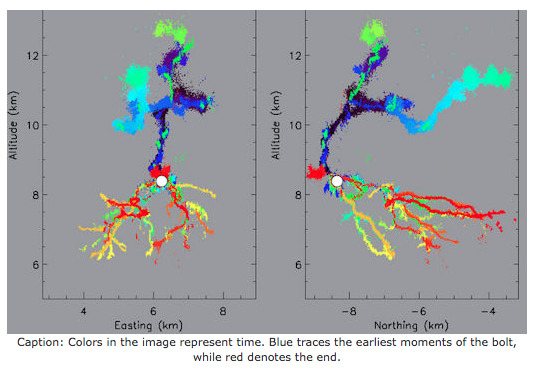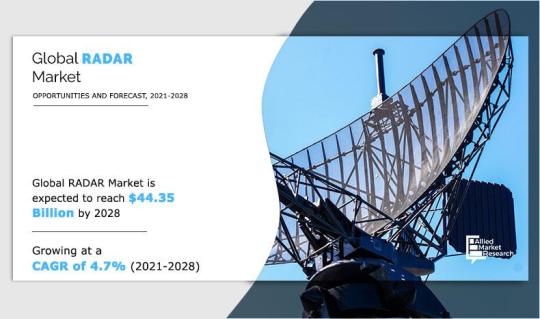#arrays of high powered antennas
Explore tagged Tumblr posts
Text
Can our military actually affect conditions in the environment and bring about weather modification? Modification technique research has actually been going on for many decades in the U.S.. Be it for strategic reasons, environmentally improved conditions, to including possible nefarious purposes, the U.S. seems to have developed modification tools that a lot of people are curious about. My latest video, "Have Military Environmental Modification Programs Really Impacted Our Lives?"
#weather modification#US weather modification programs#weather instability#drought#harsher winters#severe weather#hurricanes#earthquakes#military technology#weather manipulation#potential weather weapons#enhancing storms#targeting droughts or floods#Gokona Alaska#HAARP#arrays of high powered antennas#destabilizing weather#ionospheric changes#gigantic heaters#changing the weather#mind control#university of Alaska Fairbanks#HAARP transmitters
0 notes
Text
When you first learn about phased arrays or beamforming it's easy to be like wow, that's fucked, the net power output of this array is obviously limited by physics, but we can concentrate that energy in one place using interference which has the apparent effect of stealing energy from the low power parts of the field to add power to your high gain area, even though the antenna elements are physically separate and driven separately. It's not like normal antennas which have gain patterns thanks to their cool shapes, which is normal and good and not fucked.
But when you say that you will have the horrible realization that this is also how normal antennas work! A yagi-uda or helical antenna consists of an array of infinitesimal uniform emitters that are phased by space and time to produce non-uniform patterns! The energy is still being magically transported through the ether from one side of your antenna to the other! It's fucked! Everything is fields! Passive elements are insane! A yagi-uda is a bonkers piece of technology because it remotely drives the passive elements and that focuses the field along the axis. I want to get off Mr Huygens Wild Ride!
168 notes
·
View notes
Text

Larger image (STRONGLY recommended): HERE The resolution on this is painful, so I'm including detail shots below the cut.
This meeting room was furnished many centuries ago by a renowned artisan who could carve stone and shells in stunning detail, and could shape and colour glass in a way that was never seen before and has never been replicated since. He took the secrets of his techniques to the grave, dying at an unexpectedly young age in a duel with a public safety official over the seizure of a rare and extremely toxic pigment imported from a Clan to the far south. His name was Kelenthor, and he was the only Clanless to ever attain such a high level of renown and fortune purely on his artistic talent. He lived during what would eventually be called the Post-Unification Andorian Renaissance. While this artisan was alive, he had a somewhat adversarial relationship with various officials and was known to use his art as a medium to mock and criticize his social betters. He was beloved by the general populace for exclusively taking on students from the lower social classes - almost as much as he was resented by the upper classes for his habit of hiding subversive messages in his commissioned works. Regardless of where one stood with Kelenthor, none could deny his talents. If you wanted the best of the best, Kelenthor was the one to commission. As such, he was eventually commissioned to design and create furnishings for a number of rooms and even entire buildings which are now used exclusively by government officials today or otherwise preserved as precious cultural works.
This particular room is widely regarded as his best work: the walls are conspicuously and almost insultingly plain, barely carved at all. At the centre of the room lies a heavy and imposing table of solid marbled stone - also barely ornamented, save some bevelling along the edges. The surface was treated with a substance which renders the stone almost entirely impervious to damage. No matter how one might rain blows upon it, barely a scratch remains to remember them by - much like many of the politicians who have sat at this table since its creation, which many believe was the subversive message behind the thing in the first place.
The focal points are the throne-like seats arrayed around the blunt instrument of a marble table, intricately carved and inlaid with precious shell and glasswork, iridescent and shining under even the faintest rays of light. Each scatters prisms randomly around the room, illuminating the shadows and often causing quite a few headaches when meetings stretch too long. More importantly, every single one of them was deliberately carved to be as uncomfortable as possible. No one in a position of power, Kelenthor once said, should be comfortable there.
First up, courting and wedding bands! Shral and Dagmar are only courting, so they have simple rings with minimal ornamentation, with Dagmar's being modified to fit as a cuff earring.


Thoris is married, so he has two bands on each antennae. Quite often marriage bands are more decorative and ostentatious than his, but Thoris isn't one for baubles and it's bad enough he has to wear these ridiculous robes. Frankly, if he could get away with just wearing his old Guardsman uniform to these meetings, he'd vastly prefer to. As such, his wedding bands are almost incongruously plain for his rank and status.

Next up, the lady and gentleman in the foreground! These two are Ministers, and high-ranking Andorians besides, so they ornament themselves rather loudly in comparison to our main cast's more sedate preferences. The lady on the left is Minister Zaathi, who we will be meeting in-fic very soon, and she's very fond of gemstones and carved hair beads - and not afraid of losing any, if she sheer number she's wearing are any indications. It's a weighted fashion statement, if nothing else, from a woman whose home province is small and relatively modest otherwise.


By comparison, Minister Bhael - on the right - is much more conservative in his ornamentation, but his robes are heavily embroidered and that is quite a lot of Andorian silk to be toting around. A closer look will reveal that his sleeves are embroidered with an ocean wave pattern, which is particularly interesting given the relationship Andorians have with the sea. Is it some kind of political statement, or just an odd choice of attire?


If those two are making statements with their sartorial choices, then Thoris has them all beat for layered meanings.
The silvery outer robes of office are closer to a cloak than a robe, with an inner layer that is belted around the waist and a loose outer layer that is joined to the inner layer at the shoulders and seams along the upper arms. This permits the maximum range of movement for the wearer. Being made of Andorian silk, which is several times stronger than Terran silk, it is an excellent means of protection against slashing and stabbing weapons. Despite their merits, however, Thoris loathes them. They're lightweight, sure, but they're still long and ostentatious and entirely too liable to get caught on something in a real fight. Sadly, they're also mandatory, or he'd have binned them ages ago.
The vibrant blue mid-layer is a heavy material, durable Andorian silk woven through with tiny filaments of something very similar to a carbon fibre composite, providing a measure of protection against many forms of projectiles, though less so against phase weapons. The innermost tunic is more obviously armoured than the other two layers, with panels mimicking an extensive chitin pattern along the length of the torso and forearms. The sleeves in particular draw attention to a very vibrant yellow flash - much like the chitin of the predatory veeg he is known for hunting in the past.


Next we come to Shral, who is obscured partially by shadow at Ambassador Thoris' right hand - and ready to draw his ushaan-tor at a moment's notice.
This is not standard armour for an Andorian, but rather something one might wear while sparring or training in their personal time. The armour takes the form of layered, almost beetle-shell like layers, layered over a long, cowl-necked tunic. The cowl is an unusual choice for sparring attire, as it provides a potential hand-hold for an opponent - only a very arrogant or a very skilled duelist would wear such a thing while sparring.


In contrast, Dagmar stands in the light on Thoris' left. Her working attire is lightly embroidered, and features large, pearly buttons - but otherwise she's almost conspicuously plainly dressed. Hyper aware of how shockingly pink she is in comparison to everyone else in the room, Dagmar wears muted and neutral colours to try to off-set how glaringly alien she is - which, ironically, only serves to highlight her differences even further.


@the-lady-general @starrynightgardens @emilie786 @horta-in-charge @emochook @velvet-luvie @creature-of-the-stars @unknownfacelessfanfictions @auroramagpie
#star trek#emigre by indignantlemur#andorian#andorians#digital art#headcanon#An Eventful Meeting by IndignantLemur#ambassador thoris#Anlenthoris th'Kor#Vilashral of Clan Hrisvalar#Shral#Dagmar Gunnarssen#Kelenthor the Clanless
61 notes
·
View notes
Text
www.spaceweather.com
NEW EVIDENCE THAT COSMIC RAYS SPARK LIGHTNING: Every second, almost 50 bolts of lightning zig-zag across the skies of Earth. Despite centuries of study, however, researchers still aren't sure how the bolts get started. Electric fields in thunderclouds are often too weak to ignite a powerful discharge.

A lightning bolt over Brazil. Photo credit: Sergio Mazzi
A new study just published in the Journal of Geophysical Research may have solved the mystery.
"We believe that most lightning flashes in thunderstorms are ignited by cosmic ray showers," says the study's lead author Xuan-Min Shao, a senior scientist at the Los Alamos National Laboratory in New Mexico. To investigate the earliest moments of lightning formation, Shao and colleagues built a radio interferometer named "BIMAP-3D." Consisting of an array of 8 antennas in Los Alamos, BIMAP-3D can make three dimensional images of lightning and pinpoint the bolts inside thunderclouds. Here's an example:

Caption: Colors in the image represent time. Blue traces the earliest moments of the bolt, while red denotes the end.
This is a lightning bolt from a massive thunderstorm that passed by Los Alamos on July 30, 2022. BIMAP-3D imaged more than 300 bolts during the 90-minute storm. It was a treasure trove of data.
The experimenters realized that some of the bolts they observed happened in parts of the storm where electric fields were too weak to cause the "Initial Breakdown Event" (IBE)--the initial spark that sets the lightning in motion. Modern theories of relativistic electron avalanche couldn't explain what they saw. Their suspicions soon focused on cosmic rays. Cosmic rays are high energy particles that come from distant supernova explosions and other violent events across the cosmos. They strike Earth's atmosphere all the time, creating a secondary spray of particles called "cosmic ray showers." Regular readers are familiar with these showers because we routinely monitor them using Earth to Sky cosmic ray balloons over California.
One of the important things about cosmic ray showers is that they contain antimatter--positrons as well as ordinary electrons. The Los Alamos 3D lightning maps contained strong evidence for positrons. Electrons and positrons are bent in opposite directions by Earth's magnetic field, so they leave opposite imprints on the lightning's polarization, which BIMAP-3D also measured.

"It took me a while to figure this out," admits Shao. "I started with electrons only at the beginning, but could not explain the observations. With both electrons and positrons involved, all the observations can be consistently explained."
Positrons clinched the case for cosmic rays. "The fact that a cosmic ray shower provides an ionized path in the cloud that otherwise lacks free electrons strongly favor the inference that most lightning flashes are ignited by cosmic rays," the authors wrote.
In fact, it's still unclear how much of Earth's lightning is sparked by cosmic rays. Many more storms need to be studied with this method to improve the statistics. "This will require a lot of long-term and good quality lightning data," Shao says.
Stay tuned! And meanwhile, read the original research here.
7 notes
·
View notes
Text

Core components for NASA's Roman Space Telescope pass major shake test
The core portion of NASA's Nancy Grace Roman Space Telescope has successfully completed vibration testing, ensuring it will withstand the extreme shaking experienced during launch. Passing this key milestone brings Roman one step closer to helping answer essential questions about the role of dark energy and other cosmic mysteries.
"The test could be considered as powerful as a pretty severe earthquake, but there are key differences," said Cory Powell, the Roman lead structural analyst at NASA's Goddard Space Flight Center in Greenbelt, Maryland. "Unlike an earthquake, we sweep through our frequencies one at a time, starting with very low-level amplitudes and gradually increasing them while we check everything along the way. It's a very complicated process that takes extraordinary effort to do safely and efficiently."
The team simulated launch conditions as closely as possible. "We performed the test in a flight-powered configuration and filled the propulsion tanks with approximately 295 gallons of deionized water to simulate the propellant loading on the spacecraft during launch," said Joel Proebstle, who led this test, at NASA Goddard. This is part of a series of tests that ratchet up to 125% of the forces the observatory will experience.
This milestone is the latest in a period of intensive testing for the nearly complete Roman Space Telescope, with many major parts coming together and running through assessments in rapid succession. Roman currently consists of two major assemblies: the inner, core portion (telescope, instrument carrier, two instruments, and spacecraft) and the outer portion (outer barrel assembly, solar array sun shield, and deployable aperture cover).
Now, having completed vibration testing, the core portion will return to the large clean room at Goddard for post-test inspections. They'll confirm that everything remains properly aligned and the high-gain antenna can deploy. The next major assessment for the core portion will involve additional tests of the electronics, followed by a thermal vacuum test to ensure the system will operate as planned in the harsh space environment.
In the meantime, Goddard technicians are also working on Roman's outer portion. They installed the test solar array sun shield, and this segment then underwent its own thermal vacuum test, verifying it will control temperatures properly in the vacuum of space. Now, technicians are installing the flight solar panels to this outer part of the observatory.
The team is on track to connect Roman's two major assemblies in November, resulting in a whole observatory by the end of the year that will then undergo final tests. Roman remains on schedule for launch by May 2027, with the team aiming for as early as fall 2026.
Click here to virtually tour an interactive version of the telescope.
The Nancy Grace Roman Space Telescope is managed at NASA's Goddard Space Flight Center in Greenbelt, Maryland, with participation by NASA's Jet Propulsion Laboratory in Southern California; Caltech/IPAC in Pasadena, California; the Space Telescope Science Institute in Baltimore; and a science team comprising scientists from various research institutions. The primary industrial partners are BAE Systems Inc. in Boulder, Colorado; L3Harris Technologies in Rochester, New York; and Teledyne Scientific & Imaging in Thousand Oaks, California.
youtube
#science#space#astronomy#physics#news#nasa#astrophysics#spacetimewithstuartgary#starstuff#esa#Youtube
3 notes
·
View notes
Text
Scientists develop 3D printing technique using microwaves for faster, versatile manufacturing

- By Nuadox Crew -
Researchers at Lawrence Livermore National Laboratory (LLNL) have developed a new 3D printing technique called Microwave Volumetric Additive Manufacturing (MVAM), which uses microwave energy to cure materials.
This approach allows for a wider range of materials, including opaque and composite resins, compared to traditional light-based methods. MVAM overcomes the limitations of Volumetric Additive Manufacturing (VAM), which is restricted to transparent resins, by enabling microwaves to penetrate deeper into materials. The technique promises faster curing times and the ability to produce larger, complex parts, potentially transforming industries like aerospace, automotive, and healthcare.
The team has demonstrated the ability to cure various resins and developed a computational model to optimize the process. While existing microwave hardware can cure resins in minutes, the model suggests that curing could be reduced to mere seconds at higher power levels. Despite the promise of faster and more versatile production, researchers face challenges such as the high cost of microwave devices. Future work will focus on reducing costs, scaling up production capabilities, and refining the process for broader industrial use

Image: Proposed MVAM system: Energy from the antenna array beams is focused at specific locations through superposition, allowing for complex patterning. Credit: Additive Manufacturing Letters (2024). DOI: 10.1016/j.addlet.2024.100209
Read more at LLNL
Scientific paper: Saptarshi Mukherjee et al, Towards microwave volumetric additive manufacturing: Generation of a computational multi-physics model for localized curing, Additive Manufacturing Letters (2024). DOI: 10.1016/j.addlet.2024.100209
Other recent news
Photosynthesis in Arctic Algae: Researchers have discovered that Arctic algae can thrive with just 100,000th of daylight, showcasing a remarkable adaptation.
#microwave#3d printing#engineering#materials#arctic#biology#plants#oceanography#light#photosynthesis#algae#manufacturing
2 notes
·
View notes
Text
Challenges in Antenna Design for High-Frequency Applications
As sectors push the limits of speed and bandwidth—think 5G mmWave, satellite communications, radar, and aerospace—demand for high-frequency antennas (usually above 3 GHz) is fast increasing. However, creating antennas for these frequencies is not straightforward. In reality, it presents a distinct set of technical issues.
In this article, we'll look at the major issues that antenna designers encounter in high-frequency applications—and how businesses like Eteily Technologies are addressing them.

1. Signal Loss and Material Limitations:
At high frequencies, even tiny losses can cause significant performance decreases.
The dielectric loss in substrates (such as FR4) becomes increasingly substantial.
Conductive losses rise with the skin effect, which occurs when current runs exclusively on the surface of a conductor.
✅ Solution: Use low-loss materials such as PTFE, Rogers, or ceramic-based substrates for improved performance.
2. Miniaturization vs Performance:
Higher frequencies result in shorter wavelengths, which equates to smaller antennas.
However, lowering antenna size can:
Lower gain.
Decrease bandwidth.
Increase the sensitivity to fabrication flaws.
✅ Solution: Precision engineering, sophisticated simulation, and multi-layer PCB integration combine small size with high performance.
3. Electromagnetic Interference (EMI):
At higher frequencies, antennas are more susceptible to interference from neighboring components and systems.
✅ Solution: Use EMI shielding, provide correct antenna separation, and regulate the device's internal RF structure.
4. Manufacturing Tolerances:
At high frequencies, even little differences in form, spacing, or material might cause the antenna to detune.
✅ Solution: Maintain consistency across batches with tight tolerance manufacturing and consistent quality control.
5. Complex Simulation and Testing:
Simulation of high-frequency performance is more complicated and requires specialized techniques such as:
HFSS (High Frequency Structure Simulator)
CST Microwave Studio
Network analyzers up to 50 GHz+.
✅ Solution: Eteily combines powerful EM simulation with real-world prototyping to achieve accuracy and speed.
6. Thermal Management:
High-frequency systems, particularly those used in 5G base stations or radar, can create a substantial amount of heat.
✅ Solution: Use thermal vias, heatsinks, and low-power-loss designs to regulate heat while maintaining performance.
Eteily's Expertise in High-Frequency RF Antennas
We create high-performance antennas and modules up to 40+ GHz, suited for:
5G mmWave
Automotive radar
Aerospace communication
High-speed data connections
Industrial IoT
From bespoke PCB patch antennas to phased array modules, our staff guarantees that your product remains quick, precise, and dependable.
📣 Contact Us
Eteily Technologies India Pvt. Ltd.
📍 B28 Vidhya Nagar, Near SBI Bank Bhopal - 462026, Madhya Pradesh 📧 Email: [email protected] 📞 Phone: +91-9993979758 🌐 Website: https://eteily.com
#HighFrequencyAntenna#AntennaDesign#5GAntenna#RFChallenges#mmWaveTech#EteilySolutions#WirelessEngineering#AdvancedAntennaDesign#RFInnovation
1 note
·
View note
Text
Precision Testing for RF Chambers | DMCRF

In the world of high-frequency electronics and electromagnetic compatibility, precision testing for RF Chambers is essential to ensuring reliable, accurate, and interference-free results. At Diamond Microwave Chambers Ltd (DMCRF), we specialize in delivering advanced RF Chambers designed specifically to meet rigorous testing demands in modern industries, including aerospace, defense, automotive, telecommunications, and medical technology. Our commitment to quality and innovation helps organizations across North America create controlled environments for repeatable, high-precision measurements.
Why Precision Matters in RF Testing
Precision testing refers to the ability to produce repeatable, consistent, and accurate test results when working with radio frequency (RF) and microwave systems. In an RF testing environment, even minor interference or reflections can distort readings, resulting in flawed data. This is where high-performance RF Chambers come in—they provide a controlled, shielded, and absorbent space that eliminates external electromagnetic noise while simulating real-world operating conditions.
Whether testing antennas, wireless devices, radar systems, or electromagnetic compatibility (EMC), precision testing ensures the system or component performs exactly as intended under different frequencies, power levels, and orientations. Poor testing leads to performance failures, regulatory non-compliance, and costly rework. That’s why businesses turn to experts like DMCRF for reliable RF Chambers built to exacting standards.
The Role of RF Chambers in Precision Testing
An RF Chamber, also known as an anechoic chamber or shielded room, is a specialized enclosure designed to block external RF signals and absorb internal reflections. Inside the chamber, devices under test (DUTs) are subjected to a series of tests without interference from ambient RF noise. High-precision testing demands chambers that offer:
Broadband shielding effectiveness
RF absorbent materials to minimize reflections
Controlled test environments (temperature, humidity)
Custom configurations for specific equipment and frequency ranges
At DMCRF, each chamber is engineered for maximum performance and tailored to client requirements. We utilize the latest simulation tools and measurement systems to ensure every product provides consistent, interference-free operation across all testing scenarios.
Applications That Demand Precision Testing
RF Chambers are used in a wide array of industries, each requiring precise measurements to validate system behavior. Here are just a few examples:
1. Aerospace and Defense
Radar systems, satellite communications, and avionics rely heavily on precise RF testing. Small deviations can have major consequences. DMCRF’s precision testing solutions help aerospace engineers simulate battlefield or space environments with accuracy.
2. Telecommunications
With the rollout of 5G and beyond, RF testing has become increasingly complex. Our chambers ensure mobile devices, antennas, and base stations are compliant with the highest industry standards.
3. Automotive
Advanced Driver Assistance Systems (ADAS), V2X communications, and electric vehicle electronics require robust RF testing to function safely on the road.
4. Medical Devices
Wireless implants, telemetry systems, and diagnostic tools must be tested to ensure they work reliably in and around the human body without unwanted interference.
Key Elements of Precision Testing for RF Chambers
To achieve repeatable and valid test results, several elements must be optimized:
1. Chamber Design
DMCRF’s chambers are designed with precision in mind. From the type and placement of RF absorbers to the layout of the testing area, everything is optimized to minimize standing waves, reflections, and resonance.
2. Shielding Effectiveness
Our RF Chambers provide shielding of 100 dB or higher across a wide frequency range, effectively isolating tests from external electromagnetic fields.
3. Absorber Technology
Using premium pyramidal and wedge absorbers, DMCRF minimizes RF reflections to ensure measurements inside the chamber are unaffected by environmental interference.
4. Test Equipment Integration
Precision testing relies on seamless integration with RF test instruments—spectrum analyzers, signal generators, vector network analyzers, and antennas. DMCRF chambers are designed to interface with a wide range of testing tools and automated test systems.
5. Customization
No two testing environments are the same. DMCRF offers customized RF Chamber designs tailored to specific frequency ranges, testing procedures, and space constraints.
DMCRF: Your Partner in Precision RF Testing
At Diamond Microwave Chambers Ltd, our mission is to elevate the standards of precision testing in RF environments. With years of experience, deep technical expertise, and a strong track record across North America, we deliver RF Chambers that empower engineers and scientists to perform accurate, reproducible, and standards-compliant testing.
Our team works closely with clients from concept to commissioning—designing, fabricating, and installing RF Chambers that meet international specifications (e.g., CISPR, MIL-STD, IEEE, and ISO standards). We also offer ongoing support, calibration services, and upgrades to ensure long-term chamber performance.
Benefits of Choosing DMCRF for Your RF Chambers
Tailored Solutions: Each chamber is custom-built to your specifications and testing needs.
North American Expertise: We understand the regulatory landscape and engineering requirements specific to the USA and Canada.
Cutting-Edge Technology: We employ the latest materials and testing innovations.
Comprehensive Support: From site preparation to performance verification, we provide end-to-end support.
Final Thoughts
In today’s technology-driven industries, the need for precise RF testing is greater than ever. Whether you’re developing the next-generation wireless device, a life-saving medical tool, or a mission-critical defense system, your test environment matters. That’s why precision testing for RF Chambers must never be compromised.
At DMCRF, we don’t just build RF Chambers—we engineer environments where accuracy, reliability, and repeatability thrive. Discover the difference that precision can make in your next project. Contact us today to explore our full range of solutions and request a custom quote tailored to your testing needs.
Visit Us: https://www.dmcrf.com/rf-and-microwave-absorbers/
Contact Us: Ph.+1(613) 915 5533
0 notes
Text
Tech Innovation to Boost Growth in the Global Radar Market Through 2031
Allied Market Research, titled, “Radar Market by Offering, Product Type, Platform, Application, and End User: Global Opportunity Analysis and Industry Forecast, 2021–2028” the global radar market size was valued at $32.56 billion in 2019, and is projected to reach $44.35 billion by 2028, to register a CAGR of 4.7% from 2021 to 2028. North America is expected to be the leading contributor to the global radar market during the forecast period, followed by Europe and Asia-Pacific.
Radar is an electronic system, which measures the range and behavior of objects by transmitting an electromagnetic pulse at the object. High-power radar using large dish antennas has been used to measure distances to the moon and other planets, asteroids, and artificial satellites. In addition, radar systems are widely used in air traffic control, aircraft navigation, and marine navigation.
Radar systems have witnessed increasing popularity in the military & defense sector, as radar antennas are mounted at the airports or other ground stations to detect approaching enemy airplanes or missiles. For instance, the U.S. Department of State has approved the sales of integrated air defense weapon systems of $1.87 billion to India, which includes radar, launchers, targeting, and guidance systems, advanced medium-range air to air missiles, and more, as per a statement from the state department. In addition, Lockheed Martin, an American global aerospace, defense, security, and advanced technologies company, launched state-of-the-art next-generation RADAR technology, Digital Array Row Transceiver (DART), which operates on the principle of the gallium–nitride (GaN) technology and extends the service life of the radar system.

Major factors that drive the global radar market are increase in demand for radar systems in automotive & defense industries, advancement in radar technology, and increase in territorial battles. However, the adverse climatic conditions result in malfunctioning of radar systems, which hampers the growth of the global industry. On the contrary, increase in investment from developed countries in the military sector is anticipated to create lucrative opportunities for the expansion of the global radar market during the forecast period.
Moreover, economically developed nations tend to witness high penetration of radar technology in various vehicle segments. Factors such as economic growth, increase in demand for passenger vehicles, rise in concerns about vehicle & driver safety contribute toward the radar market growth in the coming years.
The global radar market is segmented on the basis of offering, product type, platform, application, end user, and region. By offering, the market is segmented into hardware, software, and services. By product type, the market is fragmented into continuous wave radar, pulse radar, and others. On the basis of platform, it is classified into marine, air, ground, and space. The applications covered in the study include air traffic control, remote sensing, ground traffic control, and space navigation & control. By end user, the market is differentiated into automotive, aviation, industrial, weather monitoring, military & defense, and others.
Region wise, the radar market trends have been analyzed across North America, Europe, Asia-Pacific, and LAMEA. North America contributed maximum revenue in 2019. However, between 2019 and 2028, the radar market in Asia-Pacific is expected to grow at a faster rate as compared to other regions. This is attributed to increase in investment from the developed countries such as China and India.
Key Findings Of The Study
In 2019, the continuous wave radar accounted for the maximum revenue, and is projected to grow at a notable CAGR of 3.8% during the forecast period.
North America and Europe collectively accounted for more than 60.0%% of the radar market share in 2019.
India is anticipated to witness highest growth rate during the forecast period.
Automotive segment is expected to witness highest growth rate in global radar market during forecast period.
The key players profiled in the report include Northrop Grumman Corporation, Lockheed Martin Corporation, SAAB AB, Rockwell Collins Inc., Thales Group, Honeywell International Inc., L-3 Communications Holdings, General Dynamics Corporation, BAE Systems, and Dassault Aviation. These players have adopted various strategies such as product launch, partnership, and acquisition to expand their foothold in the industry.
0 notes
Text



weirdo fuckin router I got, which is the TP-Link Archer R5. I've been looking for a reasonably high end WiFi 6 AP and stumbled on this used for a steal. It's so thin! It's intended to mount on a wall with tape or a mounting hook, so it flat-packs the antenna array and makes the whole thing lie up against a wall. Those are collapsing RJ45 terminals, like you find on thin laptops sometimes. Takes 12V USB-PD power! Every decision here makes sense but it's such an unusual set of design goals. I guess this is partially the logical conclusion of the Deco line of routers, which are aimed at people who don't like that their routers are huge eyesores.
Set it up and did a BeatSaber run, definitely less blocky and higher quality than when I'm using my router which has to penetrate a concrete wall. Very handy. Might set up a smart power switch to turn it off when it's not in use although I imagine its quiescent power is pretty low.
20 notes
·
View notes
Text
Massive MIMO Market
📊 Market Size & Projections
As of 2023, the Massive MIMO market ranged between USD 3.97 billion (Consegic) and USD 11.78 billion (Fact.MR), reflecting disparities across research estimates. However, consensus forecasts robust growth:
From $5.85 billion in 2023 to $28.9 billion by 2028 (CAGR ~37.6%)
And eventually to $119.8 billion by 2033 (CAGR ~26.1%)
Variability stems from differing base-year valuations and scope definitions (e.g., antenna types, spectrum ranges).
🚀 Key Growth Drivers
5G Network Expansion: Massive MIMO is indispensable for 5G. Its deployment supports higher capacity, lower latency, and enhanced spectral efficiency��— critical as standalone 5G connections grow (1.2 billion end‑2024; projected 3.6 billion by 2030).
Data Traffic Explosion & Device Density: The increase in mobile subscriptions, IoT endpoints, and urban data use stresses legacy networks. In Asia-Pacific, especially China and India, network densification drives Massive MIMO uptake.
Spectral Efficiency & Cost Control: Beamforming and spatial multiplexing deliver ~60 % more coverage with advanced arrays (32T32R vs 8T8R), reducing site infrastructure costs.
Smart Infrastructure & IIoT Integration: As smart cities and Industry 4.0 mature, Massive MIMO becomes essential for deterministic, low-latency, high-capacity wireless links.
🔗 𝐆𝐞𝐭 𝐑𝐎𝐈-𝐟𝐨𝐜𝐮𝐬𝐞𝐝 𝐢𝐧𝐬𝐢𝐠𝐡𝐭𝐬 𝐟𝐨𝐫 𝟐𝟎𝟐𝟓-𝟐𝟎𝟑𝟏 → 𝐃𝐨𝐰𝐧𝐥𝐨𝐚𝐝 𝐍𝐨𝐰
⚙️ Emerging Trends
Digital Beamforming: Offers precise, software-defined signal steering — a market trend supported by advanced beamforming toolkits.
Open & Interoperable Systems: Plug‑and‑play massive MIMO units (e.g., Qualcomm-powered OpenBeam) reduce vendor lock-in and improve energy efficiency.
Higher Antenna Counts: 64T64R arrays dominate revenue; deployments with 128+ antennas are being tested at upper mid-bands (6 GHz+).
Virtualization & AI‑Driven RANs: Integration with software-defined networks enables flexible resource allocation and predictive maintenance.
⚠️ Challenges
High CapEx & Complexity: Infrastructure costs for high-order arrays and associated backhaul are significant hurdles.
Skilled Personnel Shortage: There’s a global scarcity of engineers in antenna design, signal processing, and network integration .
Spectrum Constraints: Availability of mid- and high-band (mmWave, C-band, upper-6 GHz) varies by region, limiting deployment in congested markets.
🌍 Regional Highlights
Asia-Pacific: Currently dominant and fast-growing due to aggressive 5G rollouts in China, India, South Korea.
North America & Europe: Strong due to high-tech infrastructure, operator R&D, and Open RAN policies .
Emerging Regions: LAMEA (Middle East/Africa, Latin America) show rising adoption tied to 5G network build-outs .
🏢 Competitive Landscape
Key players include Nokia, Ericsson, Samsung, Huawei, ZTE, Qualcomm, Verizon, and Airtel. Notable developments: Nokia’s energy‑efficient Habrok radios, Ericsson’s large-scale Airtel deployment, and Mavenir’s OpenBeam AAUs.
🧭 Outlook
The Massive MIMO market is positioned for exponential growth, driven by 5G scale-up, digital transformation, and smart infrastructure needs. Overcoming cost and spectrum barriers — and addressing skills gaps — will be crucial. With trends toward digital beamforming, virtualization, and AI‑enhanced RAN, Massive MIMO is set to evolve further, laying the groundwork for 6G and beyond.

0 notes
Text
Revitalize Your Ride: A Deep Dive into the Srnubi 9.7" Android 12 Head Unit for the Chevrolet Cruze J300

Srnubi 9.7" Android 12 Carplay Car Radio for Chevrolet Cruze J300 2008 - 2012 Multimedia Player 2 din GPS Stereo DVD Head Unit
👍👍Buy now: https://youtu.be/G9NX3MxXkQ4
🔥🔥 DISCOUNT: 47% 🔥🔥
The first-generation Chevrolet Cruze (J300), produced from 2008 to 2012, remains a reliable and popular choice for many drivers. However, as technology has leaped forward, the factory-installed infotainment system can feel decidedly dated. Enter the Srnubi 9.7" Android 12 Carplay Car Radio, a multimedia player designed to breathe new life into the Cruze's interior, offering a wealth of modern features and a user experience that rivals much newer vehicles. This comprehensive blog post will explore every facet of this popular aftermarket head unit, from its impressive feature set to the installation process and real-world performance.
A Glimpse into the Future: What the Srnubi Head Unit Offers At the heart of this upgrade is a vibrant 9.7-inch vertical touchscreen that dramatically modernizes the Cruze's dashboard. This high-resolution display provides a crisp and clear interface for all your media and navigation needs. But the beauty of this system is more than skin deep. It runs on the versatile Android 12 operating system, bringing a familiar and highly customizable tablet-like experience to your car.
Key Specifications at a Glance:
Feature
Specification
Operating System
Android 12
Display
9.7-inch HD Touchscreen
Processor
Quad-core / Octa-core options available
RAM
Options typically range from 2GB to 8GB
Internal Storage
Options typically range from 32GB to 128GB
Connectivity
Wi-Fi, Bluetooth, USB
Navigation
Built-in GPS with support for various mapping apps
Special Features
Apple CarPlay, Android Auto, Steering Wheel Control support, AM/FM Radio with RDS, DSP for enhanced audio, optional AHD reverse camera support
Export to Sheets Transforming Your Driving Experience: The Core Benefits The true value of the Srnubi head unit lies in how its features translate into a more enjoyable, convenient, and connected driving experience.
Seamless Smartphone Integration with Apple CarPlay and Android Auto: For many, this is the headline feature. By connecting your iPhone or Android device, the head unit's display transforms into a familiar interface, providing easy access to your favorite navigation apps like Waze and Google Maps, music streaming services such as Spotify and Apple Music, and hands-free calling and messaging. This integration is seamless and significantly safer than fumbling with your phone while driving.
The Power of Android 12: Unlike the closed systems of many factory radios, the Android 12 platform opens up a world of possibilities. You can download a vast array of apps directly from the Google Play Store, from podcasts and audiobooks to weather and news apps. This level of customization allows you to tailor the in-car experience to your exact preferences.
A Superior Navigation Experience: The large 9.7-inch screen makes following navigation routes a breeze. The built-in GPS is accurate and responsive, and with access to online mapping services, you benefit from real-time traffic updates, ensuring you always take the most efficient route.
Enhanced Audio Control: For audiophiles, the built-in Digital Signal Processor (DSP) is a significant upgrade over the stock radio. It offers a multi-band equalizer and various sound field adjustments, allowing you to fine-tune the audio to your liking and get the best possible sound from your Cruze's speakers.
Unboxing and Installation: What to Expect Inside the box, you'll typically find the head unit itself, a dedicated wiring harness for the Chevrolet Cruze J300, a GPS antenna, USB cables, and RCA cables for connecting external devices like a reverse camera.
The installation process is designed to be relatively straightforward for those with some experience in car electronics. The provided wiring harness is generally plug-and-play, minimizing the need for complex wire splicing. However, it's crucial to ensure you have the correct harness for your specific Cruze model.
A note on installation: While many users successfully install the unit themselves by following online video tutorials, professional installation is always recommended if you are not comfortable with automotive wiring. This will ensure a clean and secure fit and prevent any potential electrical issues.
Real-World Performance: The Good and the Not-So-Good Online user reviews and forums paint a generally positive picture of the Srnubi head unit's performance. The interface is praised for its responsiveness and ease of use. App compatibility is excellent, thanks to the modern Android operating system.
However, like any aftermarket product, there are some potential considerations. Some users have reported minor software bugs, which can often be resolved with a system update or a simple reboot. The built-in microphone for hands-free calling is generally adequate, but an external microphone (often an optional extra) can improve call quality. It's also worth noting that while the unit is designed to integrate with the steering wheel controls, some users have reported needing to perform a manual button mapping process within the settings to ensure full functionality.
The Verdict: A Worthwhile Upgrade for the Modern Cruze Owner For owners of the Chevrolet Cruze J300 (2008-2012) looking to bring their in-car technology into the 21st century, the Srnubi 9.7" Android 12 Carplay Car Radio presents a compelling proposition. It offers a massive leap forward in terms of features, connectivity, and user experience compared to the stock radio. The large, vibrant touchscreen, coupled with the power of Android 12 and the seamless integration of Apple CarPlay and Android Auto, transforms the cabin into a modern, connected, and enjoyable space. While the installation may require some technical know-how and minor software tweaks might be necessary, the end result is a revitalized ride that feels fresh, functional, and future-proofed for the years to come.
#carplay#ai_box#car_dvr#car_radio_player#tesla#android#tv_box#dashcam#camera#video#google#multimedia#player#apple#iptv#live#streaming#youtube#netflix#car_screen#home
0 notes
Text

Europa Clipper: Millions of miles down, instruments deploying
NASA's Europa Clipper, which launched Oct. 14 on a journey to Jupiter's moon Europa, is already 13 million miles (20 million kilometers) from Earth. Two science instruments have deployed hardware that will remain at attention, extending out from the spacecraft, for the next decade—through the cruise to Jupiter and the entire prime mission.
A SpaceX Falcon Heavy rocket launched it away from Earth's gravity, and now the spacecraft is zooming along at 22 miles per second (35 kilometers per second) relative to the sun.
Europa Clipper is the largest spacecraft NASA has ever developed for a planetary mission. It will travel 1.8 billion miles (2.9 billion kilometers) to arrive at Jupiter in 2030 and in 2031 will begin a series of 49 flybys, using a suite of instruments to gather data that will tell scientists if the icy moon and its internal ocean have the conditions needed to harbor life.
For now, the information mission teams are receiving from the spacecraft is strictly engineering data (the science will come later), telling them how the hardware is operating. Things are looking good. The team has a checklist of actions the spacecraft needs to take as it travels deeper into space.
Boom times
Shortly after launch, the spacecraft deployed its massive solar arrays, which extend the length of a basketball court. Next on the list was the magnetometer's boom, which uncoiled from a canister mounted on the spacecraft body, extending a full 28 feet (8.5 meters).
To confirm that all went well with the boom deployment, the team relied on data from the magnetometer's three sensors. Once the spacecraft is at Jupiter, these sensors will measure the magnetic field around Europa, both confirming the presence of the ocean thought to be under the moon's icy crust and telling scientists about its depth and salinity.
On the radar
After the magnetometer, the spacecraft deployed several antennas for the radar instrument. Now extending crosswise from the solar arrays, the four high-frequency antennas form what look like two long poles, each measuring 57.7 feet (17.6 meters) long. Eight rectangular very-high-frequency antennas, each 9 feet (2.76 meters) long, were also deployed—two on the two solar arrays.
"It's an exciting time on the spacecraft, getting these key deployments done," said Europa Clipper project manager Jordan Evans of NASA's Jet Propulsion Laboratory in Southern California. "Most of what the team is focusing on now is understanding the small, interesting things in the data that help them understand the behavior of the spacecraft on a deeper level. That's really good to see."
Instrument checkout
The remaining seven instruments will be powered on and off through December and January so that engineers can check their health. Several instruments, including the visible imager and the gas and dust mass spectrometers, will keep their protective covers closed for the next three or so years to guard against potential damage from the sun during Europa Clipper's time in the inner solar system.
Mars-bound
Once all the instruments and engineering subsystems have been checked out, mission teams will shift their focus to Mars. On March 1, 2025, Europa Clipper will reach Mars's orbit and begin to loop around the Red Planet, using the planet's gravity to gain speed. (This effect is similar to how a ball thrown at a moving train will bounce off the train in another direction at a higher speed.) Mission navigators have already completed one trajectory correction maneuver, as planned, to get the spacecraft on the precise course.
At Mars, scientists plan to turn on the spacecraft's thermal imager to capture multicolored images of Mars as a test operation. They also plan to collect data with the radar instrument so engineers can be sure it's operating as expected.
The spacecraft will perform another gravity assist in December 2026, swooping by Earth before making the remainder of the long journey to the Jupiter system. At that time, the magnetometer will measure Earth's magnetic field, calibrating the instrument.
IMAGE: An artist’s concept of NASA’s Europa Clipper shows the spacecraft in silhouette against Europa’s surface, with the magnetometer boom fully deployed at top and the antennas for the radar instrument extending out from the solar arrays. Credit: NASA/JPL-Caltech
8 notes
·
View notes
Text
Leading Copper Strips Manufacturers in India – Superior Performance & Reliability by KWM India
Copper is one of the most important metals in industrial and electrical applications, thanks to its outstanding electrical conductivity, thermal efficiency, corrosion resistance, and malleability. Among its many forms, copper strips are a widely used product, favored across industries such as power distribution, electronics, telecommunications, renewable energy, and manufacturing. As one of the top copper strips manufacturers in India, KWM India offers precision-engineered copper strips that meet global quality standards, customized to meet diverse industry requirements.
What Are Copper Strips?
Copper strips are long, narrow, flat pieces of copper produced by rolling copper slabs or billets into thin, continuous forms. These strips are manufactured in various thicknesses, widths, and tempers to suit different applications. Their superior conductivity, excellent resistance to corrosion, and high strength make them ideal for use in both electrical and mechanical systems.
Whether it’s a power transmission project, electrical control system, or a grounding network, copper strips play a vital role in ensuring reliable, efficient, and safe operations.
KWM India – A Trusted Manufacturer of Copper Strips
KWM India has become a recognized name in the Indian non-ferrous metals industry, known for its advanced manufacturing facilities, experienced workforce, and unwavering commitment to quality. As a prominent copper strips manufacturer in India, KWM serves a wide range of sectors, offering copper products that deliver consistent performance, durability, and precision.
By focusing on innovation and customer satisfaction, KWM India ensures that its copper strips are produced to meet the technical specifications and compliance standards required by modern industry.
Key Features of Copper Strips by KWM India:
High-Purity Electrolytic Copper: KWM uses top-grade copper (up to 99.9% purity) to manufacture strips with superior electrical and thermal conductivity.
Customized Dimensions & Tempers: Copper strips are available in a range of thicknesses (0.2 mm to 6 mm), widths, and tempers (soft, half-hard, and hard), tailored to client needs.
Tight Tolerances & Accuracy: KWM employs advanced rolling mills and cutting equipment to maintain dimensional precision and surface uniformity.
Corrosion Resistance: KWM’s copper strips are ideal for indoor and outdoor applications, including humid or chemically active environments.
Surface Finish & Quality Assurance: Products feature a smooth finish with minimal surface oxidation. Every batch undergoes rigorous testing to ensure quality, strength, and consistency.
Applications of Copper Strips
KWM India’s copper strips are used across a wide array of industries:
Electrical Industry: Extensively used in busbars, switchgear, control panels, connectors, terminals, and grounding systems due to their unmatched conductivity.
Power Generation & Distribution: Applied in transformers, circuit breakers, and substation components for efficient energy transmission.
Renewable Energy: Used in solar panels, inverters, and wind turbine systems for reliable and eco-friendly power solutions.
Electronics & Telecommunications: Employed in printed circuit boards (PCBs), antennas, and shielding applications.
Industrial Machinery: Utilized in heat exchangers, welding equipment, and mechanical parts where strength and conductivity are essential.
Automotive & Railways: Copper strips are used in EV components, electrical wiring systems, and connectors.
Why Choose KWM India?
Experience & Expertise: With years of experience in copper product manufacturing, KWM understands the complex needs of various industries and delivers accordingly.
Technological Advantage: KWM’s advanced rolling and quality control systems ensure each product meets precise technical and functional specifications.
Customized Solutions: From small orders to large-scale industrial supply, KWM offers flexible production and delivery options tailored to your requirements.
Quality Certifications: All products are manufactured following ISO standards and meet national and international quality norms.
Efficient Logistics: A robust distribution network ensures timely delivery across India and to global clients.
Sustainability Commitment: KWM uses eco-friendly processes and recycles materials wherever possible, contributing to greener manufacturing.
Conclusion
As industries across the globe evolve with increasing reliance on efficient and sustainable electrical systems, the demand for high-quality copper strips continues to rise. KWM India, as one of the premier copper strips manufacturers in India, meets this demand with products that combine performance, durability, and precision.
Whether you're looking for standard copper strips or need customized dimensions and properties, KWM India is your trusted partner for excellence in copper manufacturing.
Contact KWM India today to request a quote or learn more about their copper strip solutions designed for modern industry needs.
Visit:- https://www.kmwindia.com/copper-strips.html
0 notes
Text
Global Millimeter Wave Antennas and Transceiver Components Market: Size, Share, 2025–2032
Global Millimeter Wave Antennas and Transceiver Components Market Research Report 2025(Status and Outlook)
Millimeter Wave Antennas and Transceiver Components Market size was valued at US$ 1.87 billion in 2024 and is projected to reach US$ 4.95 billion by 2032, at a CAGR of 11.7% during the forecast period 2025-2032
Our comprehensive Market report is ready with the latest trends, growth opportunities, and strategic analysis.https://semiconductorinsight.com/download-sample-report/?product_id=95861
MARKET INSIGHTS
The global Millimeter Wave Antennas and Transceiver Components Market size was valued at US$ 1.87 billion in 2024 and is projected to reach US$ 4.95 billion by 2032, at a CAGR of 11.7% during the forecast period 2025-2032.
Millimeter wave (mmWave) antennas and transceiver components are critical hardware enabling high-frequency wireless communication systems operating in the 30-300 GHz spectrum range. These components include phased array antennas, beamforming ICs, power amplifiers, and low-noise amplifiers that collectively support 5G networks, satellite communication, and radar applications. The technology’s ability to deliver ultra-high bandwidth makes it indispensable for next-generation connectivity solutions.
The market growth is driven by accelerating 5G deployment worldwide, with over 300 commercial 5G networks launched globally as of Q2 2024. However, signal attenuation challenges in mmWave propagation necessitate continuous innovation in antenna designs. Key players like NEC Corporation and L3Harris are advancing beam-steering technologies, while emerging applications in autonomous vehicles and industrial IoT create new growth avenues. Recent developments include Qualcomm’s 2024 Snapdragon X75 modem supporting 10-carrier mmWave aggregation, significantly enhancing network capacity.
List of Key Millimeter Wave Component Companies Profiled
NEC Corporation (Japan)
L3Harris Technologies (U.S.)
Axxcss Wireless Solutions (U.S.)
Siklu (Israel)
Smiths Group (UK)
Eravant (U.S.)
Aviat Networks (U.S.)
Farran Technologies (Ireland)
Millimeter Wave Products (U.S.)
Segment Analysis:
By Type
Fully Licensed Frequency Millimeter Wave Segment Leads Due to High Reliability in Critical Communications
The market is segmented based on type into:
Light licensed frequency millimeter wave
Unlicensed frequency millimeter wave
Fully licensed frequency millimeter wave
Others
By Application
Mobile & Telecom Sector Dominates Owing to 5G Network Deployments Worldwide
The market is segmented based on application into:
Mobile & Telecom
Consumer & Commercial
Healthcare
Industrial
Automotive & Transportation
Imaging
By Component
Antennas Segment Holds Major Share Due to Increasing Demand for High-Frequency Communication Systems
The market is segmented based on component into:
Antennas
Subtypes: Patch antennas, Horn antennas, Arrays, and others
Transceivers
Amplifiers
Mixers
Others
By Technology
MIMO Technology Gains Traction for Enhanced Data Throughput in 5G Networks
The market is segmented based on technology into:
MIMO
SISO
Beamforming
Others
Regional Analysis: Global Millimeter Wave Antennas and Transceiver Components Market
North America The North American market leads in millimeter wave (mmWave) technology adoption, driven by extensive 5G deployments and telecom infrastructure modernization. The U.S. accounts for over 60% of the regional market share, with carriers investing heavily in mmWave backhaul solutions to support urban network densification. Regulatory support from the FCC, including the release of 24 GHz, 28 GHz, and 39 GHz bands, accelerates commercialization. Key players like L3Harris and Aviat Networks dominate due to their expertise in high-frequency wireless solutions. However, high deployment costs and signal attenuation challenges in adverse weather persist as industry hurdles. Canada follows with incremental growth, particularly in smart city initiatives across Toronto and Vancouver.
Europe Europe’s market is propelled by stringent EU directives on 5G rollouts and spectrum harmonization. Countries like Germany, the UK, and France prioritize mmWave for industrial automation and fixed wireless access. The ETSI’s EN 302 264 standard governs mmWave component interoperability, fostering compliance-driven innovation. Siemens and Ericsson leverage partnerships to develop scalable mmWave solutions for smart factories and autonomous vehicles. Southern and Eastern Europe lag due to budget constraints, though EU-funded projects like Horizon Europe aim to bridge this gap. Environmental concerns over mmWave radiation exposure have spurred additional regulatory scrutiny, influencing product design.
Asia-Pacific APAC is the fastest-growing market, with China contributing ~40% of regional demand via its “5G+” infrastructure strategy. India’s BharatNet project and Japan’s Beyond 5G roadmap further stimulate mmWave adoption. Chinese firms like NEC Corporation (via local JVs) lead in cost-effective transceiver production, while South Korea focuses on mmWave-enabled AR/VR applications. Southeast Asia shows nascent potential, though tropical climates pose propagation challenges. Price sensitivity drives demand for unlicensed 60 GHz solutions in SMEs, contrasting with Japan’s preference for licensed bands in precision manufacturing.
South America Brazil and Argentina spearhead mmWave deployment, primarily for urban backhaul and oil/gas monitoring. Brazil’s Anatel auctioned 26 GHz spectrum in 2022, unlocking private network opportunities. However, economic instability and currency fluctuations deter large-scale investments. Vendors adopt hybrid licensing models to balance performance and affordability. Colombia and Chile exhibit moderate growth, driven by mining and port automation. Lack of localized R&D and reliance on imports constrain technological self-sufficiency.
Middle East & Africa The GCC nations, led by UAE and Saudi Arabia, prioritize mmWave for smart city visions (e.g., NEOM). UAE’s TRA allocated 26 GHz and 28 GHz bands for enterprise 5G, boosting Siklu’s E-band sales. Africa’s growth is uneven, with South Africa and Kenya deploying mmWave for last-mile connectivity, while underdeveloped fiber backbones limit scalability. Harsh desert environments necessitate ruggedized antenna designs. Israel emerges as an R&D hub, with startups like Siklu focusing on military-grade mmWave solutions. Sub-Saharan Africa faces spectrum allocation delays and power infrastructure gaps.
MARKET DYNAMICS
The global rollout of 5G networks is creating unprecedented demand for millimeter wave antennas and transceiver components. With 5G requiring significantly higher bandwidth than previous generations, millimeter wave technology (24GHz-300GHz) has become essential for delivering multi-gigabit speeds and ultra-low latency. Mobile network operators worldwide are actively deploying mmWave solutions, with forecast suggesting over 30% of all 5G base stations will utilize mmWave spectrum by 2027. This transformation is particularly evident in dense urban environments where high-frequency bands provide the capacity needed for smart city applications and industrial IoT.
Millimeter wave components are becoming indispensable in automotive safety systems, with 77GHz and 79GHz frequencies emerging as the standard for advanced driver assistance systems (ADAS). The automotive radar market is projected to maintain a compound annual growth rate exceeding 20% through 2030, driven by regulatory mandates for collision avoidance systems and the race toward autonomous vehicles. Major automakers are integrating higher resolution mmWave radars that can detect objects with centimeter-level precision, even in poor weather conditions. Recent product launches demonstrate how component miniaturization is enabling seamless integration into vehicle designs without compromising performance.
Military organizations worldwide are modernizing communications and surveillance systems with mmWave technology. The ability to transmit large data volumes securely with minimal interference makes mmWave ideal for tactical networks, electronic warfare systems, and missile guidance. Defense budgets allocating increasing shares to electronic systems have created sustained demand for ruggedized mmWave components that maintain reliability in extreme environments. Recent contracts awarded to leading manufacturers highlight how phased array antennas and high-power transceivers are becoming standard in next-generation defense platforms.
The market is highly fragmented, with a mix of global and regional players competing for market share. To Learn More About the Global Trends Impacting the Future of Top 10 Companies. https://semiconductorinsight.com/download-sample-report/?product_id=95861
FREQUENTLY ASKED QUESTIONS:
What is the current market size of Global Millimeter Wave Antennas and Transceiver Components Market?
-> Millimeter Wave Antennas and Transceiver Components Market size was valued at US$ 1.87 billion in 2024 and is projected to reach US$ 4.95 billion by 2032, at a CAGR of 11.7% during the forecast period 2025-2032.
Which key companies operate in Global Millimeter Wave Antennas and Transceiver Components Market?
-> Key players include Axxcss Wireless Solutions, NEC Corporation, Siklu, L3HARRIS, Smiths Group, Eravant, Aviat Networks, Farran Technologies, and Millimeter Wave Products, among others.
What are the key growth drivers?
-> Key growth drivers include 5G network deployments, increasing demand for high-speed connectivity, government investments in telecom infrastructure, and rising adoption in defense & aerospace applications.
Which region dominates the market?
-> North America currently leads the market, while Asia-Pacific is projected to witness the highest growth rate during the forecast period.
What are the emerging trends?
Related Reports:
https://semiconductorblogs21.blogspot.com/2025/07/global-single-use-bioprocessors-sensors.htmlhttps://semiconductorblogs21.blogspot.com/2025/07/global-photonic-infrared-sensors-market.htmlhttps://semiconductorblogs21.blogspot.com/2025/07/global-industrial-digital-contact-image.htmlhttps://semiconductorblogs21.blogspot.com/2025/07/global-edge-computing-ai-chips-market.htmlhttps://semiconductorblogs21.blogspot.com/2025/07/global-semiconductor-intellectual.htmlhttps://semiconductorblogs21.blogspot.com/2025/07/global-post-cmp-residue-removal-market.htmlhttps://semiconductorblogs21.blogspot.com/2025/07/global-wafer-cmp-equipment-market-value.htmlhttps://semiconductorblogs21.blogspot.com/2025/07/global-wafer-wet-cleaning-equipment.htmlhttps://semiconductorblogs21.blogspot.com/2025/07/wafer-used-oxidation-equipment-market.htmlhttps://semiconductorblogs21.blogspot.com/2025/07/global-wafer-used-lithography-equipment.htmlhttps://semiconductorblogs21.blogspot.com/2025/07/global-wafer-used-coater-and-developer.htmlhttps://semiconductorblogs21.blogspot.com/2025/07/wafer-used-etching-equipment-market.htmlhttps://semiconductorblogs21.blogspot.com/2025/07/global-wafer-used-ion-implantation.htmlhttps://semiconductorblogs21.blogspot.com/2025/07/global-wafer-used-dry-etching-equipment.htmlhttps://semiconductorblogs21.blogspot.com/2025/07/global-wafer-used-pvd-equipment-market.html
CONTACT US: City vista, 203A, Fountain Road, Ashoka Nagar, Kharadi, Pune, Maharashtra 411014 [+91 8087992013] [email protected]
0 notes
Text
How Antenna Arrays Improve Signal Reception and Transmission
In today's fast-paced wireless environment, whether it's 5G, IoT, drones, or smart cities, strong, dependable signals are critical. This is where antenna arrays come in.
Unlike a single antenna, an antenna array is a collection of antennas that work together to improve signal strength, range, and minimize interference. Consider it a team of antennas working toward a common goal: improved performance.

Why do antenna arrays perform better?
Stronger Signal: Arrays combine power from numerous components to increase gain, resulting in clearer, longer-range transmission.
Beamforming Magic: They may guide the signal in a single direction, increasing focused coverage and decreasing waste.
Better Reception: They can detect weak signals more efficiently, which is important in distant or loud locations.
Smarter Communication: When used in 5G, radar, and MIMO systems, arrays may change orientations and adjust in real time.
Where to Find Antenna Arrays
5G Base Stations.
Drones & UAVs
Wi-Fi routers
IoT gateways
Satellite Links
Defense and surveillance systems
Upgrade with Eteily antenna arrays
Eteily Technologies designs and manufactures high-performance antenna arrays for sectors that require accuracy, power, and dependability.
Our devices, which range from specialized phased arrays to small MIMO solutions, are ready to increase your connection regardless of the application.
💡 Need assistance selecting the appropriate array for your product? We're only a message away.
📣 Let’s Connect Your Signal to Success
📍 B28 Vidhya Nagar, Near SBI Bank Bhopal - 462026, Madhya Pradesh 📧 Email: [email protected] 📞 Phone: +91-9993979758 🌐 Website: https://eteily.com
#AntennaArray#SignalBooster#5GAntenna#Beamforming#MIMO#WirelessInnovation#EteilyRF#NextGenConnectivity#AntennaSolutions#StrongerSignal
1 note
·
View note